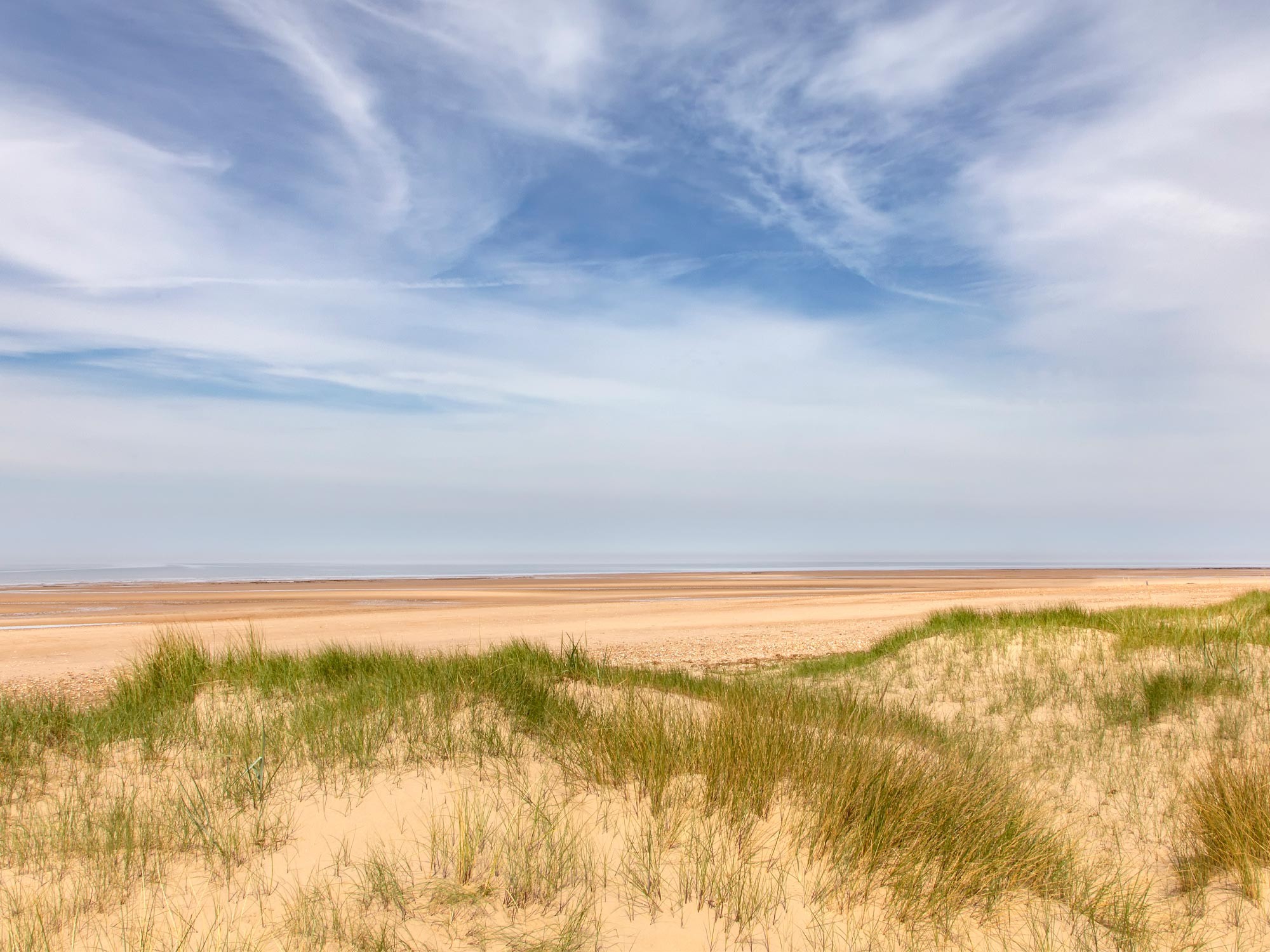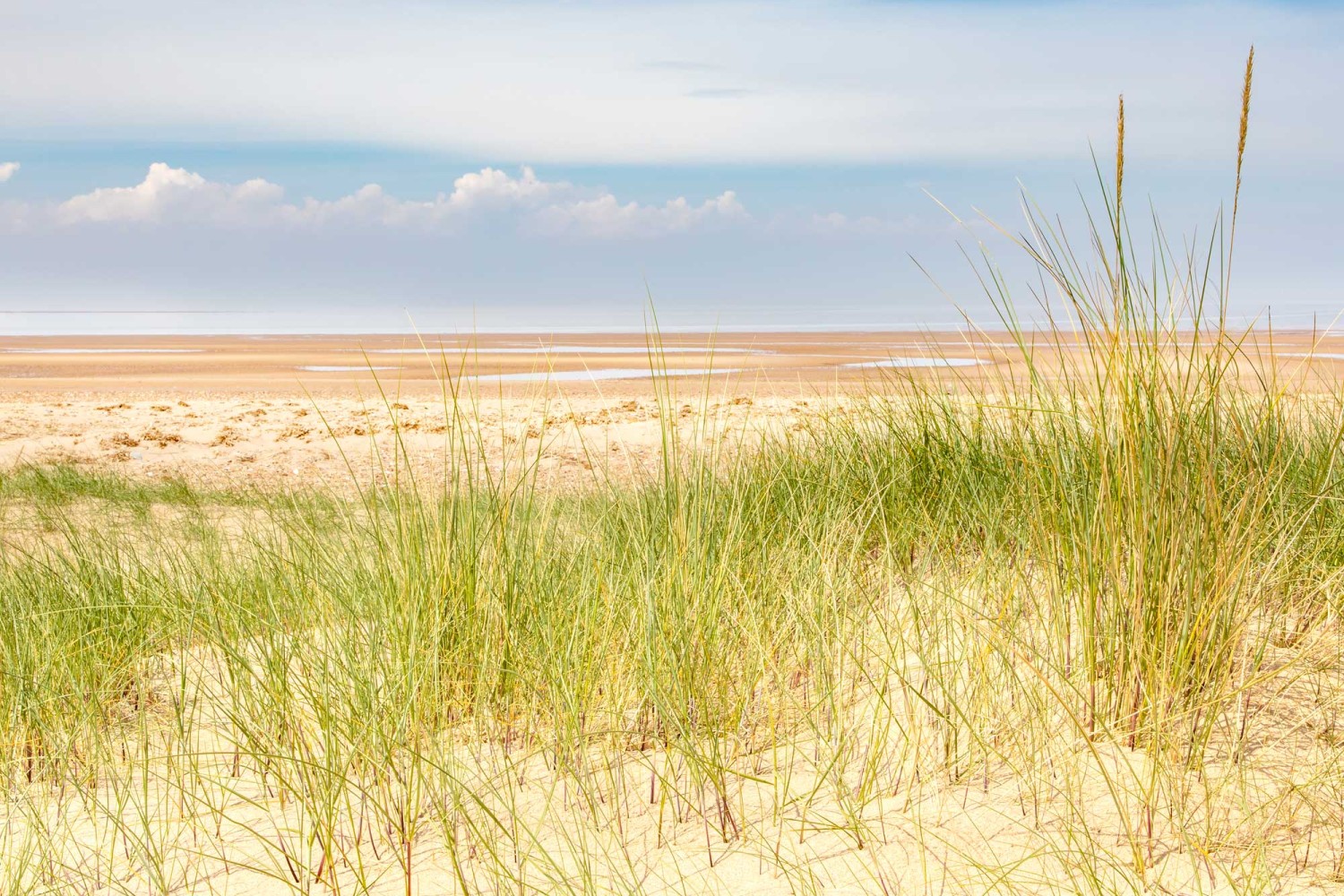
Holme Beach
The beach at Holme is one of Norfolk’s best-kept secrets, a beautiful stretch of coastline that manages to remain unusually quiet and tranquil even in the height of the holiday season. It’s well worth making the effort to discover, though.
A narrow lane off the A149 takes you to the edge of one of the top 100 golf courses in the UK, and a short walk over the sand dunes will lead you to the beach. With the Holme Dunes Nature Reserve behind you, turn left and you’ll see the distinctive lighthouse at Hunstanton, while in the other direction you’re treated to a virtually uninterrupted vista of sand and sky where you can even see the Northern Lights - although not very often.
With no restrictions, this is the perfect place for walking the dogs (all the way to Snettisham if you’re particularly energetic), and there’s no better place to take your hiking boots. The beach at Holme is where Peddars Way ends its 46-mile journey from Knettishall Heath in Suffolk - and meets the equally picturesque (and even longer) Norfolk Coast Path.
But if you thought Holme was a little too quiet, you’d be surprised.
The beach made international headlines in 1998 with the discovery of the 4,000 year old timber circle christened ‘Seahenge’ by the media - which was removed partly to preserve it and partly to protect the beach (and its adjacent nature reserve) from crowds of visitors.
This is an important and fragile natural environment for numerous species of birds and wildlife (it’s also one of the best places in Norfolk to spot a barn owl) - within a National Nature Reserve, part of a Site of Special Scientific Interest and one of the few Natura 2000 sites in England. The beach at Holme is a wonder to visit, but it also carries the responsibility to avoid disturbing nesting or wintering birds.
Another fascinating discovery at Holme (though not quite as ancient as Seahenge) was the identification of the wreck of a large wooden and metal ship, first spotted in 1985 from aerial photographs. It’s moved about 100m southwards since then, and is thought to be the remains of The Vicuna, an ice-carrying ship that sank in March 1883 en-route to King’s Lynn.
Holme may not be one of the most visited beaches in Norfolk, but it’s certainly one of the most attractive.

